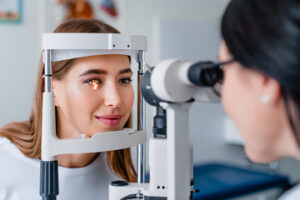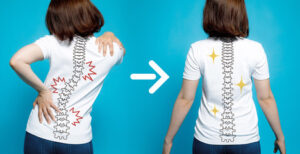Physical Therapy Hazlet New Jersey is a form of health care that treats various injuries and illnesses. Its benefits include reducing pain and restoring movement. It also reduces the need for surgery and prescription drugs.

PTs often spend one-on-one time with their patients. They may also have assistants to help them perform treatments.
Physical therapy is a form of health care that involves working with patients to restore movement dysfunction caused by injuries or medical conditions. This treatment can also help prevent future injuries by teaching patients how to move correctly. Physical therapists use a variety of hands-on techniques, including massages, exercises, and treatments based on physical stimuli such as heat, cold, electrical currents, and ultrasound. They are also trained to assess, plan, and implement interventions.
Before your first physical therapy session, you’ll need to schedule an initial evaluation. A physical therapist will evaluate your symptoms, history of pain or injury, and current level of mobility. They may also ask questions about your diet, sleep patterns, and work life. This information will help them develop a treatment plan that is customized for your needs.
During the evaluation, your physical therapist will use different tests to measure your range of motion and strength. They’ll also conduct a soft tissue massage to relieve pain and reduce inflammation in the tissues. Depending on your symptoms, they may also recommend electrotherapy. This technique uses a combination of electric stimulation, ice packs, and manual therapy to promote blood circulation and heal wounds.
Once your physical therapist has evaluated you, they’ll create a personalized treatment plan. This will include your personal goals, like functioning better or feeling less pain, as well as the types of exercises and other treatments you should do at home. They’ll also explain how physical therapy can improve your overall health and how it can complement other forms of healthcare, such as medication.
The goal of physical therapy is to help you regain movement and improve your quality of life. Physical therapists can treat a variety of injuries and medical conditions, from simple sprains to severe conditions like cerebral palsy. They can also assist with managing chronic disorders such as diabetes and fibromyalgia.
In many states, you can see a physical therapist without a referral from a doctor. However, if you have a serious condition, it’s important to talk to your doctor first. They can write a prescription for physical therapy, or you might be able to self-refer. You can also talk to your insurance company about coverage options.
It’s not a cure
Physical Therapy, or physiotherapy, is an excellent way to improve your health and reduce pain. However, it’s important to understand that physical therapy is not a cure for any disease. A physical therapist is trained to identify the root cause of your pain and treat it appropriately. A therapist can also help you learn to control your pain through self-management techniques and exercises. Whether you have chronic pain or a debilitating condition, physical therapy can help you regain independence and lead a healthier life.
Often, pain is caused by muscle imbalances or the formation of scar tissue after an injury. These issues can be addressed through a variety of physical therapy methods, including therapeutic exercise, massage, electrical stimulation, joint mobilization, taping, and cold or heat therapy. Physical therapists can also teach you how to properly use assistive devices if needed.
In addition to treating pain, a physical therapist can also help you prevent or manage chronic conditions such as arthritis, fibromyalgia, and rheumatoid arthritis. Physical therapy can reduce stress on your joints, improve balance, and help you move more easily. It can even help you avoid surgery or other invasive procedures. In many cases, physical therapy is an effective alternative to medications, which can have harmful side effects.
Some injuries require short-term physical therapy to relieve pain and recover from an injury, while others need long-term care to treat a debilitating condition. However, it is important to talk to your doctor about the best options for your specific situation.
In order to get the most benefit from physical therapy, it is important to attend all of your appointments and follow the instructions your therapist provides. In addition, it is important to communicate openly with your therapist so that they can help you address any problems or concerns that arise during treatment. For example, if you have trouble keeping up with your at-home workouts, let your therapist know right away so they can make adjustments. If you don’t do this, you may not get the results you want. Also, remember that it is often difficult to feel the benefit of treatment immediately. This is because the muscles must be retrained, so you will need to practice consistently over time.
It’s not expensive
Whether you’ve recently injured yourself or are experiencing pain that’s just been getting worse, Physical Therapy can help. It’s a safe and effective treatment option that can reduce your risk of future injury or pain, without the use of prescription medications or surgery. It’s also much cheaper than other medical interventions. In fact, a recent study showed that Physical Therapy can reduce medical costs by 50%, compared to a doctor visit and MRI.
The average cost of a Physical Therapy session is $50, but it can be more or less depending on several factors. The type of treatment you need and the length of each appointment will impact the cost. For example, patients that need extensive musculoskeletal manipulation may pay more than those who only require exercise therapy. Additionally, you might need to purchase specialized equipment for home use (e.g., hot and cold packs, balance boards). Fortunately, many practices offer a range of payment options to suit any budget.
Some practices are cash-only, while others accept insurance and provide flexible financing plans. It’s a good idea to discuss your options with the front desk staff before you start treatment. This will give you an idea of what to expect in terms of costs and allow you to make informed choices about the best course of treatment for your needs.
If you have insurance, your physical therapist will evaluate and create an individualized treatment plan for you. This will include modalities such as ultrasound and electrical stimulation, as well as manual therapy techniques like soft tissue massage and joint mobilization. Some therapists will even prescribe dry needling to stimulate your muscle tissue and promote healing.
Once you’ve completed your individualized evaluation, you can begin to receive treatments at regular intervals. Your therapist will monitor your progress and determine if your treatment plan needs to be revised. The length of each treatment session varies and will be dictated by the guidelines set out in your individualized treatment plan. In most cases, the treatment frequency will decrease as you progress through your recovery.
It’s a team effort
Physical Therapy is a valuable form of healthcare that can help reduce pain, improve mobility, aid in injury recovery, and promote functional independence. It is a great alternative to surgery and can even prevent long-term complications. However, it’s important to remember that Physical Therapy is a team effort and requires the coordination of multiple healthcare professionals.
During the initial assessment, a physical therapist will conduct a physical examination and take a detailed history of the patient’s health and symptoms. The therapist will also use functional tests to measure muscle strength and joint range of motion. If the patient cannot move on their own, a physical therapist will bring in a technician or occupational therapist to assist with exercises.
Once the physical therapist has a complete picture of the patient’s condition, they will create a treatment plan to address the issues and help the patient reach their goals. This may include addressing pain, improving balance, or enhancing the quality of sleep. The therapist will also recommend lifestyle modifications like exercise, nutritional changes, and stress reduction techniques.
One of the most important aspects of a Physical Therapy career is writing. In addition to preparing for and performing PT sessions, clinicians need to write progress reports and evaluations. This is a critical skill that needs to be mastered in order to provide the best care for patients.
The therapist will work closely with the patient to design tailored exercise regimens that focus on the specific muscles that need improvement. They will also use a variety of techniques to reduce the pain, such as cupping therapy, blood flow restriction therapy, and dry needling. The therapist will help the patient develop proper posture, increase flexibility, and gain strength to prevent future injuries.
When working with a physical therapist, it’s important to find one who is caring and knowledgeable. They should be able to communicate effectively with the patient and their family members. This will ensure the patient gets the most out of their treatment plan.
It’s also a good idea to encourage the therapist to attend continuing education classes and seminars. This will allow them to expand their knowledge base and show that the practice is invested in their professional development. These training opportunities can also provide a way for the therapist to network with other practitioners and share information with colleagues.








